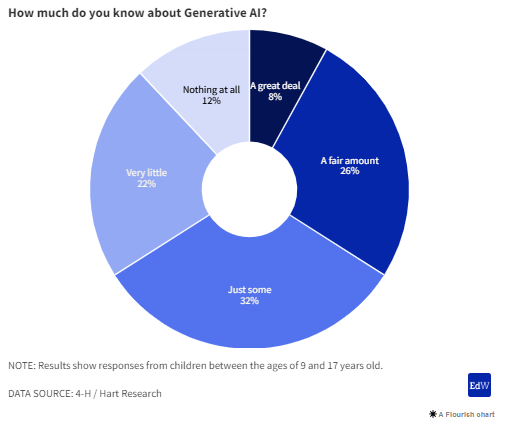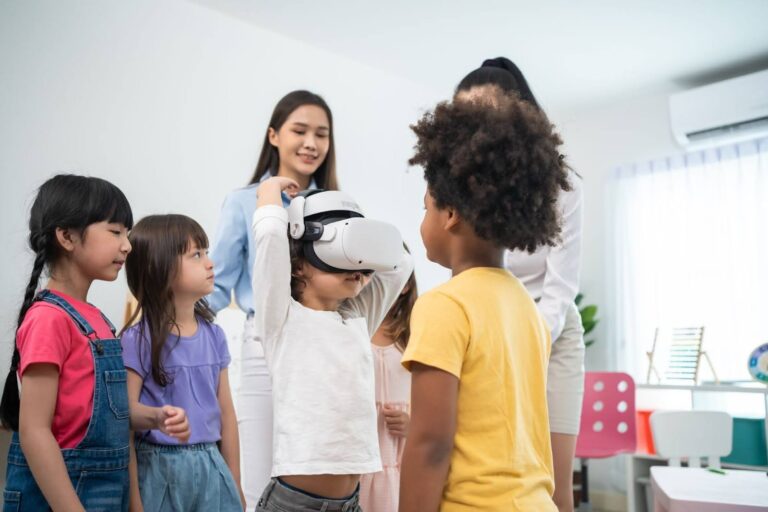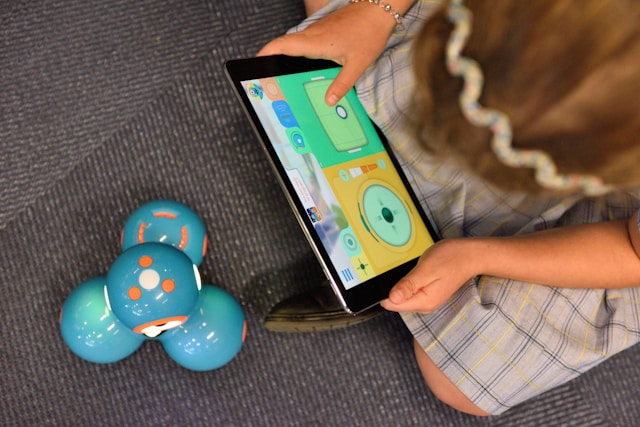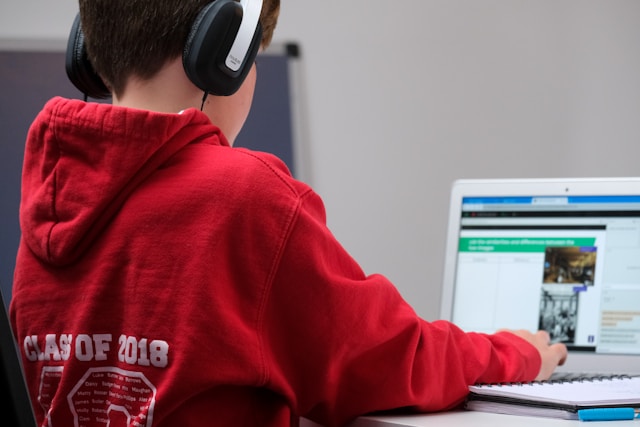
In today’s digital world, technology is changing almost every part of our lives, and education is no exception. Among the most exciting advancements is the rise of Artificial Intelligence (AI) and robotics. These tools are changing the way children learn, making lessons more interactive, personalised and sometimes fun. However, as with any new technology, it is important for parents, teachers and schools to consider the benefits and risks.
This article explores how AI is changing the way children learn, offering exciting opportunities while raising important questions.
Artificial Intelligence in education refers to the use of AI-powered tools and systems that help with learning, teaching, and even managing classrooms. These technologies aim to make learning more personalised and efficient, while also assisting teachers by automating some tasks.
AI has already found its way into classrooms through tools like Khan Academy, which uses AI to create customised learning experiences. Intelligent Tutoring Systems (ITS) are also gaining popularity, helping students in subjects like maths, science, and language by offering one-on-one tutoring tailored to each child’s pace.
AI makes it possible for students to get real-time feedback on their work, helping them understand mistakes quickly and learn more efficiently. Imagine a system that instantly tells your child why their maths answer is wrong and guides them to the right solution. This kind of personalised learning can help students stay engaged and progress faster.
This chart from EdWeek illustrates the varying levels of knowledge about Generative AI among children aged 9 to 17, showing a diverse range of understanding from very little to a great deal.

AI is opening up new ways for children to learn, offering benefits that can make the learning process smoother and more enjoyable.
One of the most significant perks of AI in education is how it personalised learning for each child. AI can adapt lessons to fit a student’s individual needs, ensuring that fast learners aren’t held back and those who need more time get the support they require. This tailored approach makes learning more engaging and efficient.
There are no more times when students have to wait for their teachers to return graded assignments. AI can provide instant feedback, so kids can learn from their mistakes right away. This immediate response helps them adjust their understanding in real time, which can result in a more effective learning experience.
AI can also be a huge help to teachers. It takes on routine administrative tasks like grading and attendance, freeing up teachers’ time so they can focus on what matters most: their students. By handling these time-consuming tasks, AI allows teachers to be more present and involved in creating interactive and innovative learning experiences.
Overall, AI makes learning more adaptable to different styles. Whether a child learns best through visuals, hands-on activities, or traditional methods, AI can adapt accordingly. Additionally, some AI-powered tools offer immersive experiences that can bring subjects like history or science to life through interactive simulations and games.
While AI offers many promising opportunities, there are some risks that come with integrating it into children’s education.
One of the biggest concerns with AI is the amount of data it collects. From tracking progress to customising lessons, AI systems gather a lot of personal information about students. Parents and schools need to be cautious about how this data is stored and used to ensure that it’s protected from misuse or breaches.
AI can’t replace the human touch that teachers bring to the classroom. There’s a risk that relying too heavily on AI could reduce opportunities for students to develop crucial social and emotional skills. Interacting with friends and teachers plays a big role in children’s development, and AI might not provide the same environment for these interactions.
A strong bond between teachers and students is essential for effective learning. While AI can support teachers by taking on routine tasks, it could also risk reducing face-to-face time between teachers and students. Striking the right balance between AI and human interaction is key.
Not every child has access to AI-enabled tools. Schools with limited funding may struggle to implement these technologies, which could widen the gap between students who have access to the latest tools and those who don’t. It’s important to address these disparities to ensure all students benefit from AI’s potential.

AI doesn’t just enhance learning for students; it also helps teachers by taking care of some behind-the-scenes work.
Administrative tasks, such as attendance tracking or grading, can take up a lot of time for teachers. AI can step in to handle these tasks, giving teachers more time to focus on teaching, planning lessons, and connecting with their students.
ITS are AI-powered tools that offer personalised tutoring in subjects like maths and language. These systems are particularly useful for kids who need extra help outside of regular class time, providing additional support tailored to their needs.
Generative AI is also making waves in education, particularly in creative subjects like writing and art. These tools can help kids explore their creativity by suggesting ideas, providing prompts, or even generating visual aids.
As AI continues to evolve, its influence in education is expected to expand significantly. In the future, AI could take on a bigger role in developing curricula and assessing students, potentially creating tailored educational paths based on each child’s unique interests and strengths.
The way we teach and learn in classrooms may also transform, with AI-powered tools enhancing creative projects and offering interactive experiences. Additionally, robotics could become more integrated into classrooms, providing students with hands-on learning opportunities, from assisting with science experiments to collaborating on group projects. The possibilities are both exciting and vast.
AI is already transforming education, bringing new opportunities for personalised learning and making teachers’ jobs easier. However, it’s essential to navigate the risks carefully, especially when it comes to data privacy and emotional development. By working together, parents, educators, and tech companies can ensure AI is used to create enriching and safe learning environments for all children.
Want to learn more about how AI can positively impact your child’s education? Visit Kids.Tech for the latest trends, resources, and expert advice on safely integrating AI into learning experiences!


